Doctora en Ciencias Biología, de la Università degli Studi Roma Tre, Italia, Magister en Biología de la Universidad Javeriana y Licenciada en Química de la Universidad Distrital Francisco José de Caldas. Con amplia experiencia en cátedra universitaria en las asignaturas de Bioquímica, Biología Celular, Química General, e Inmunología para programas de Ciencias Naturales e Ingenierías y Ciencias de Salud. Con trayectoria y especial interés en proyectos de investigación enfocados hacia la expresión y regulación de blancos moleculares de agentes con potencial quimioterapéutico de origen natural y sintético. Entre los trabajos relevantes se encuentran la validación experimental de la red de interacción asociada a la expresión de proteínas pro-apoptóticas así como el estudio de las funciones y la regulación de proteínas implicadas en muerte celular inducida por compuestos polifenólicos de especies del género Chromolaena, consideradas como plantas medicinales con potencial antioxidante y antiproliferativo. Los diferentes proyectos han permitido adquirir habilidades en técnicas inmunológicas, de Biología Celular, Molecular y Microscopía, Técnicas cromatográficas para la separación, purificación e identificación de proteínas implicadas en mecanismos de acción de moléculas con potencial terapéutico en cáncer.
GRUPOS DE INVESTIGACIÓN: INVESTIGACIONES BIOMÉDICAS Y DE GENÉTICA HUMANA APLICADA GIBGA
LÍNEAS DE INVESTIGACIÓN: Salud Humana y Animal
LINEAS DE TRABAJO: Biología Celular y Molecular del Cáncer
PRODUCTOS DESTACADOS
Chromolaena tacotana (Klatt) R. M. King and H. Rob. Source of Flavonoids with Antiproliferative and Antioxidant Activity
Fecha de publicación: 31/05/2018
Objetive: To determine the antioxidant and antiproferative activity of the flavonoids isolated from the leaves of Chromolaena tacotana. Methods: Extraction was carried out with dichloromethane (CH2Cl2) from the leaves by soxhlet, the flavonoids were isolated by column chromatography (Si gel G 60-200 microns 4 x 60cm) eluted with CHCl3, mixtures of CHCl3: MeOH and MeOH. The molecular structures were elucidated by 1HNMR, 13CNMR mono and 2D and UV spectroscopic methods with displacement reagents. Each flavonoid was evaluated for its antioxidant activity by the methods DPPH● and ABTS● + and the cytotoxic activity was evaluated by MTT analysis. Findings: These compounds were identified as 3,5,4’-trihydroxy-7- methoxyflavone (Ct1), 3,5,8-trihydroxy-7,4’dimethoxyflavone (Ct2), 5,4’-dihydroxy-7-methoxyflavanonol (Ct3) and 5, 7, 3’, 4’-tetrahydroxy-3-methoxyflavone (Ct4). The flavonoid that had the best response in antioxidant activity was Ct4 with and IC50 of 2.51mg/L of DPPH● and 2.13 mg/L of ABTS●+. Antiproliferative potential showed that MDA-MB-231 breast cancer cells were the most sensitivity cell line to the flavonoids, and Ct2 is the flavonoid with better antineoplastic potential on majority of cells, except for the most resistant SiHa cervix cancer cells. Application: The high antioxidant activity of flavonoids isolated from Chromolaena tacotana and its antiproliferative activity on different cell lines, make the species a plant with pharmacological potential.
Más información ⇨
- « Anterior
- 1
- …
- 3
- 4
- 5
- 6
- Siguiente »

